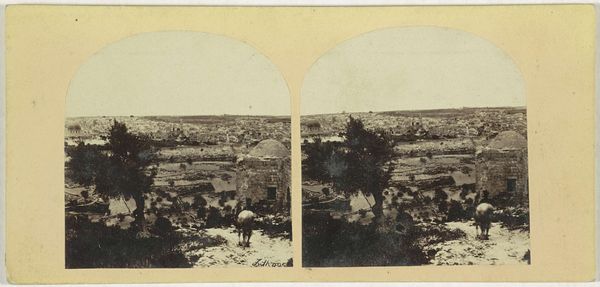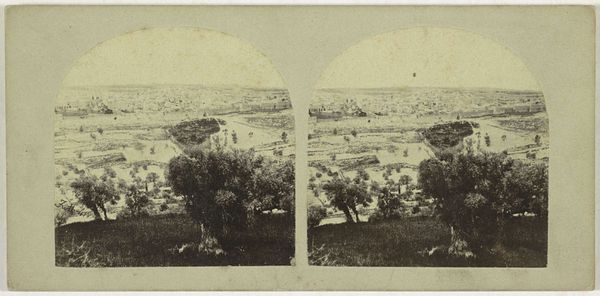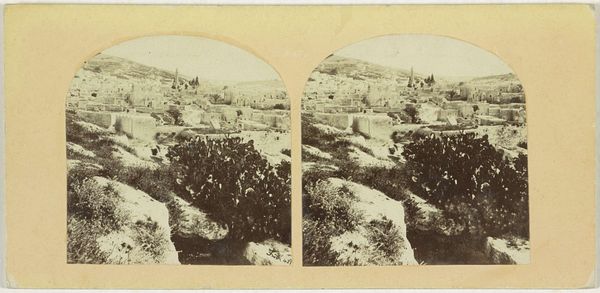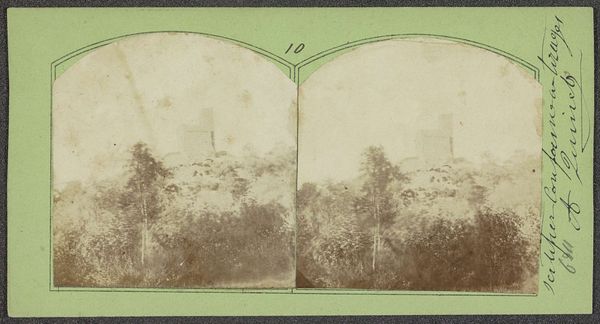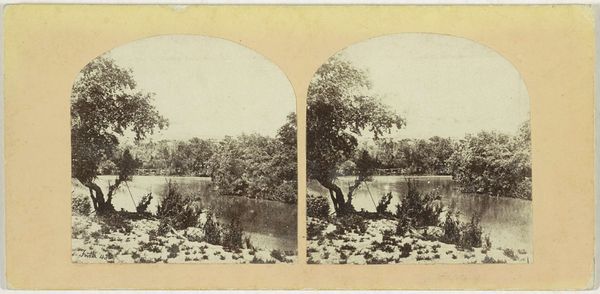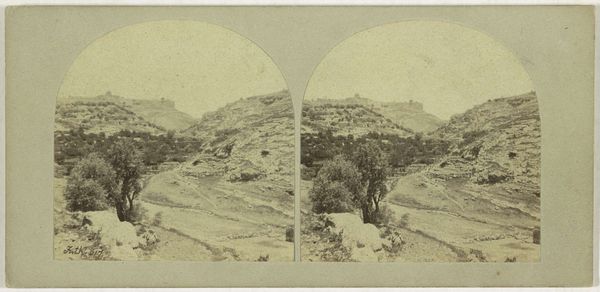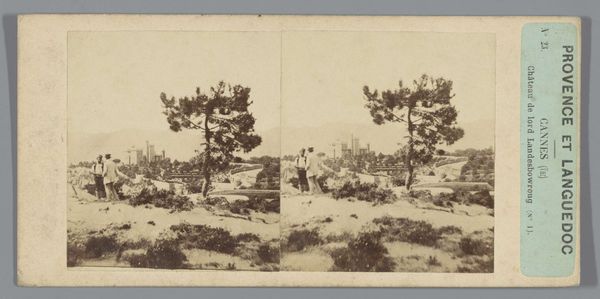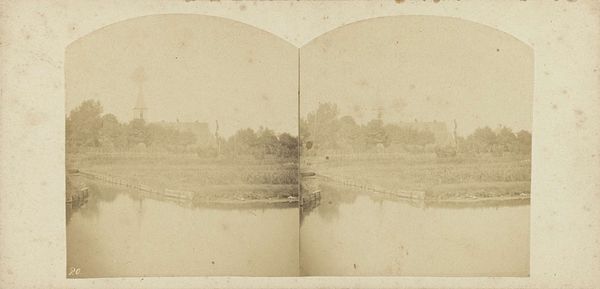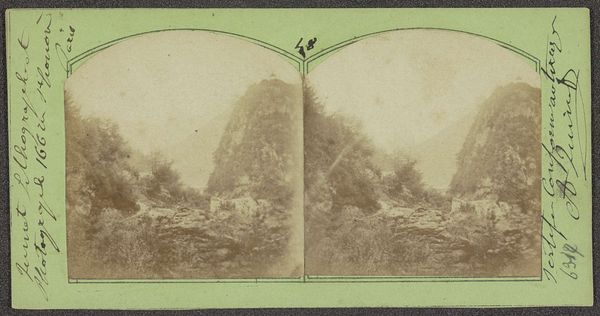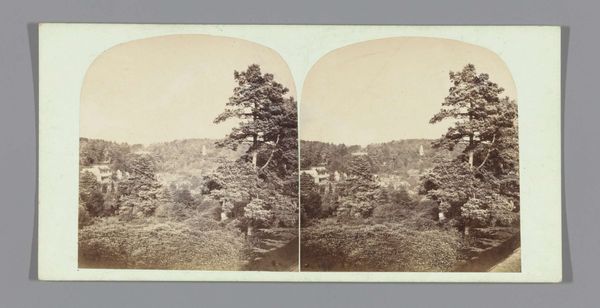
photography
#
16_19th-century
#
landscape
#
photography
#
mixed media
#
watercolor
Dimensions: height 69 mm, width 69 mm, height 69 mm, width 69 mm, height 82 mm, width 171 mm
Copyright: Rijks Museum: Open Domain
Curator: I'm immediately drawn to the texture of this photograph. It feels almost dreamlike, with those muted tones. There's a palpable sense of vastness. Editor: Indeed. This is "Gezicht op Jeruzalem vanaf de Olijfberg," or "View of Jerusalem from the Mount of Olives," a photographic print captured between 1856 and 1860 by Francis Frith. It's currently held at the Rijksmuseum. The subdued palette is quite typical for photography from that period. Curator: And Jerusalem, of course, a site loaded with historical and political weight. You've got this single tree in the foreground, almost a lone witness to the unfolding narrative. It really highlights themes of observation and perspective. Editor: Semiotically, that olive tree acts as a powerful index—rooted, enduring, deeply entwined with the history of the land. Consider, too, the architectural elements, those almost geometric structures contrasted with the organic forms. Curator: The framing itself feels very intentional, doesn't it? Almost as if Frith is positioning the viewer to grapple with questions of colonialism and representation. Here, Jerusalem is observed, cataloged, almost claimed through the very act of photographic reproduction. Editor: Quite so. But structurally, the composition draws the eye through several planes: from the foreground with its detail, across the mid-ground and then towards that almost hazy cityscape of Jerusalem on the horizon. I am struck, however, by its serene almost pastoral qualities. Curator: And to whose serenity does it speak? Whose story is valorized and whose marginalized? Think about the layers of narrative erased or overlooked within the colonial gaze of the camera. Editor: That’s such a compelling angle. The visual austerity contrasts so starkly with Jerusalem’s multifaceted and complicated role as a sacred site for several cultures. Curator: Exactly. Understanding who is behind the lens becomes critically important. Editor: I appreciate you directing our focus toward such crucial elements. Examining artwork requires attention not only to inherent artistic structure, but social underpinnings, also. Curator: I feel we barely scratched the surface, however this image and discussion prompt deep introspection of both oneself and one’s cultural values, that seems critical in approaching art history.
Comments
No comments
Be the first to comment and join the conversation on the ultimate creative platform.
